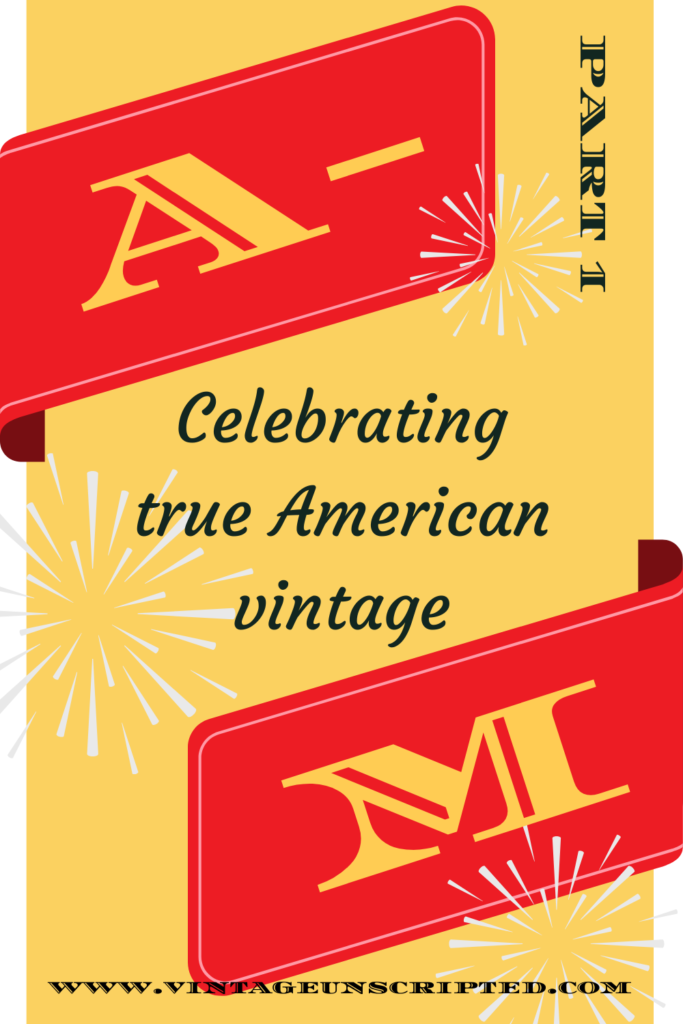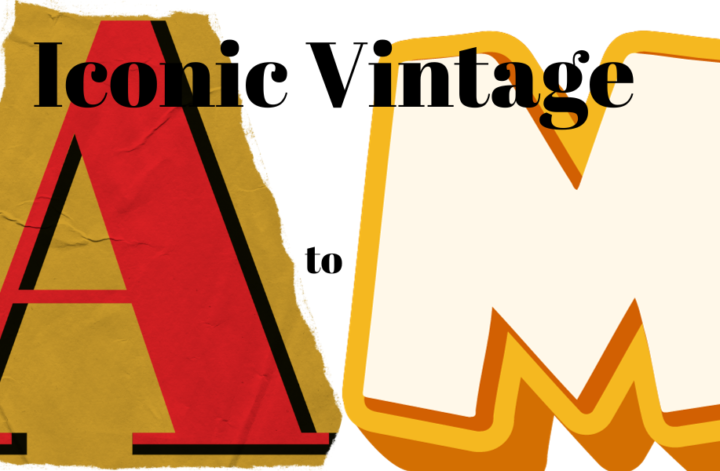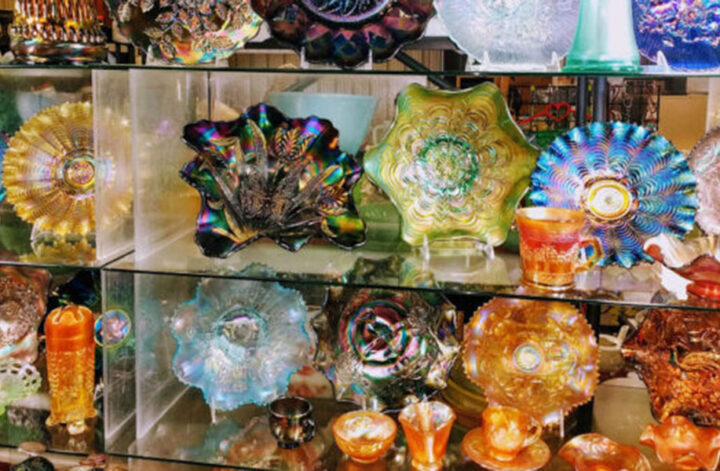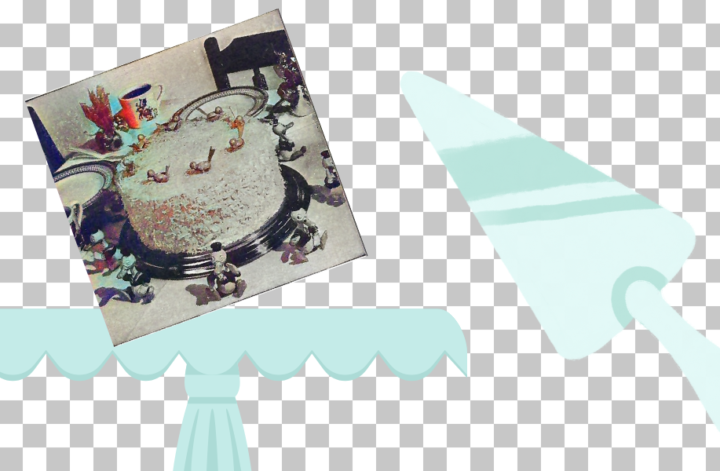We love vintage from everywhere. But there is something to be said for true American vintage classics. Things that have stood the test of time and are as treasured now as they were in their own time. The Vintage Unscripted team has searched our shops to celebrate our made in America vintage history. Part one celebrates A – M. Part two, N-Z. And there may be a few surprises along the way. After all, we are Vintage UNSCRIPTED!
A is for Anchor Hocking Company 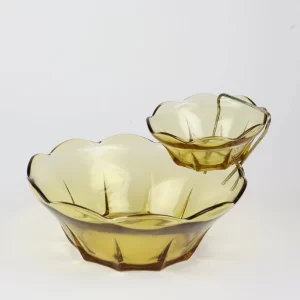
Starting life as the Hocking Glass Company in Lancaster, OH in 1905, it became Anchor Hocking in 1937 when it merged with the Anchor Cap and Closure Company. Anchor Hocking made glass for every home, affordable, stylish and durable, meaning there are lots of vintage pieces out there to collect and use. Anchor Hocking may be one of the most well known and beloved American vintage companies. Featured: 1950s Anchor Hocking chip & dip set
B is for Baskets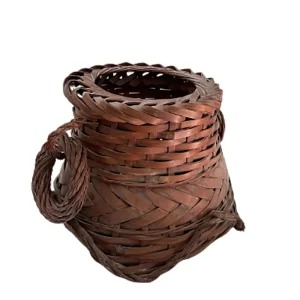
Baskets have been a staple of American life for centuries. Typically woven by hand, they were originally used for gathering, toting and as decorative pieces. Happily, good solid vintage baskets serve the same purpose in the 21st century. Featured: Antique woven wicker basket with looped handles
C is for Country Store Advertising 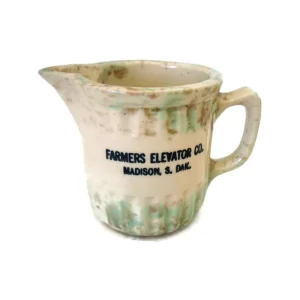
Nothing more fun than collecting vintage souvenirs of all the places you’ve been and American country stores are a great source of advertising collectibles. Specialize by location, type of souvenir or a common theme and you’ll have a great travelogue to share with your guests.Featured: Antique spatterware pitcher marked “Farmers Elevator Co., Madison S. Dak “
D is for Dolls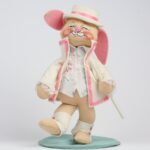
Annalee Mobilitee Dolls were crafted in Meredith, NH are the creation of artisan dollmaker Annalee Thorndike. What started as small cottage industry in her home in the 1950s grew into a “factory in the woods,” with seven buildings filled with stitchers and painters and more. The market for collectible dolls fell in the 1990s, leading to operations being moved overseas in 2001. Collectors look for the true original Annalees, with hand-painted faces and bodies built in the woods of New Hampshire. Featured: 1989 Annalee Easter Rabbit.
E is for Ephemera 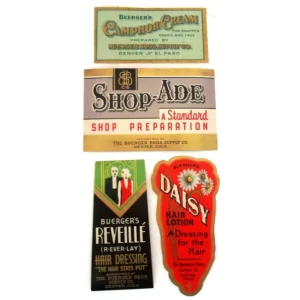
Ephemera is defined as “things of no lasting value”, typically paper goods such as tickets, posters or packaging designed to be discarded after use. Little did Merriam-Webster know that vintage collectors would value the ephemera itself more often than the original contents of the product. Featured: Buerger Bros bottle labels. 1930s
F is for Fenton
The Fenton Art Glass Company was founded in 1905 in Ohio and is world famous for its art glass. The example to your left is the hobnail pattern and was first introduced in the 1930’s. Featured: Small milk glass shoe or slipper. Original label
G is for Golden Books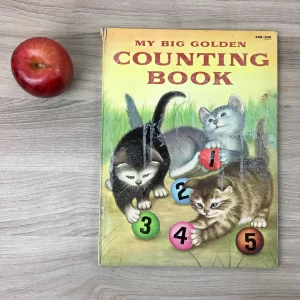
How a small printing company in Racine, WI grew to be the publishers of the iconic Little Golden Books is a great American success story. Through forming smart connections with other publishers and smartly seeing a need for inexpensive, sturdy books for kids in the 1940s, a lot of us have happy memories of The Pokey Little Puppy, and more. Featured: My Big Golden Counting Book, lavishly, colorfully and perfectly illustrated. 1957
H is for Hankies 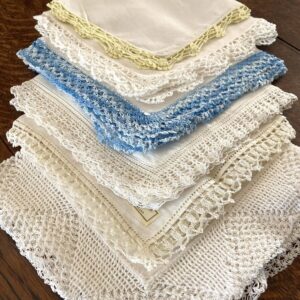
Hankies or Handkerchiefs are a sophisticated way to make a statement. They work well as accessories in a pocket of a suit jacket or tucked into a purse. Hankies come in many designs from plain white cotton to hand embroidered linen, often with delicate crochet edging. In this time of heightened environmental awareness hankies make a great alternative to paper tissues. Besides the fact that they are much prettier. Featured: Set of six Crochet Edge Hankies
I is for Ink 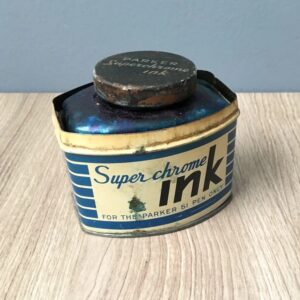
The Parker Pen Company was founded by George Safford Parker in 1888. The Janesville, WI company started with fountain pens, and moved on to inks and ballpoint pens and all manner of writing implements. In 1931, the company introduced “Quink,” a quick drying ink that made blotting paper obsolete. Featured: Vintage Parker Super chrome ink bottle and tin
J is for Josef Originals 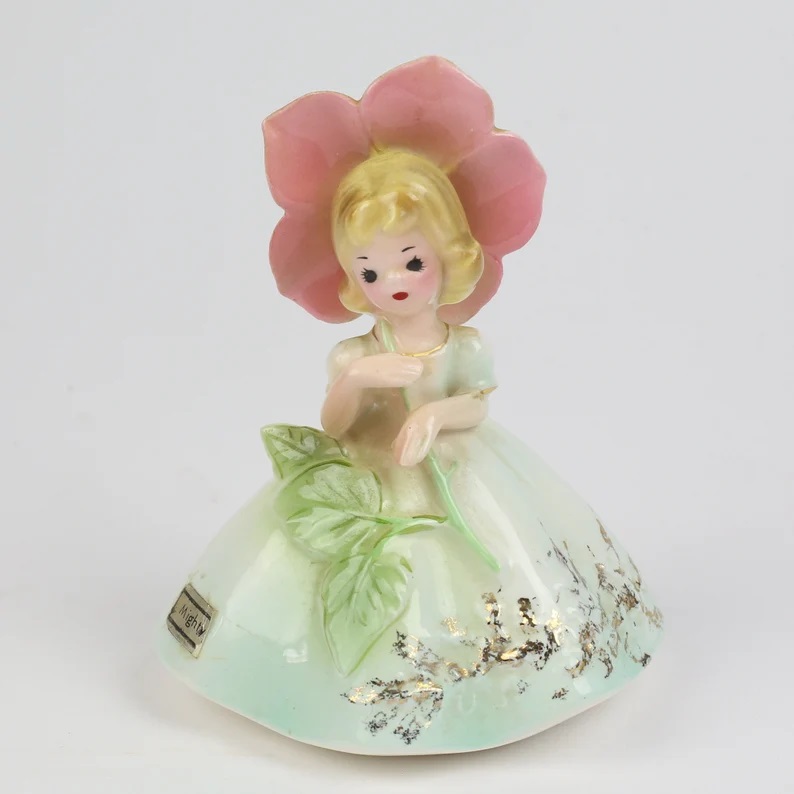
Josef Originals was founded by a woman designer and modeler of charming figurines. Muriel Joseph (1910-1992) was a lucite jewelry maker in California during World War II. When she became unable to source her lucite, she turned her creative talents to clay and sculpted figurines. Her soon-to-be spouse Tom George returned from the War and was able to support her by making molds of her creations and firing the kiln. She accidentally paid for custom stickers that were misprinted with Josef and decided to name her company Josef Originals. When poorly made copies of her items produced in Japan caused her grief, she and Tom worked with George Good. The three went to Japan to the Katayama factory who produced high caliber ceramics in scaled up quantities. They worked together to produce the beautiful work that Muriel sold and brought her fame. As an aside, the Holt Howard principals also went to Japan and collaborated for similar quality items which also catapulted their items and collectability. Though she died in 1992, the love of her darling figurines lives on. Featured: “Mighty Like a Rose” girl
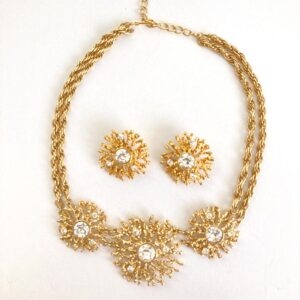 K is for Kenneth Jay Lane
K is for Kenneth Jay Lane
Born in Detroit, Kenneth Jay Lane opened his business in 1963. He won multiple awards for jewelry design over many years. His jewelry has been worn from everyone from Jackie Kennedy to Britney Spears. His jewelry is widely popular and while being a name brand was created for everyone from royalty to the average woman. Featured: KJL for Avon Necklace and Earrings set
L is for License Plates 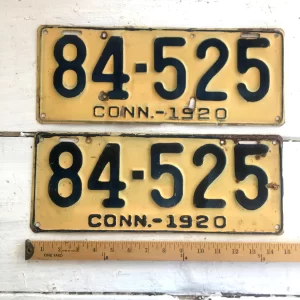
License plates originated in the United States in New York in 1901 and are required for all motorized vehicles and trailers. Each state has their own design with numeric or alphanumeric ID system that identifies the vehicle with the owner. Featured: 1920 Connecticut license plates
M is for Monet 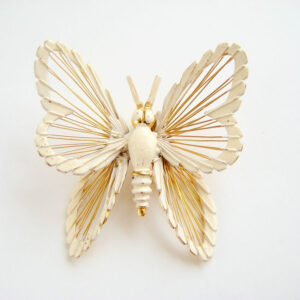
The road to what became Monet costume jewelry started with two New York brothers who ran into business trouble when demand for their monogrammed car door medallions disappeared in the Depression. They revised their designs into easy-to-apply handbag monogram letters, which were eagerly snapped up by department stores as a much cheaper alternative to the personalized products they were offering. In the late 1930s, the brothers expanded from purse monograms to monogram pins and fobs, eventually opening a factory in Providence, RI to make their ever expanding line of costume jewelry. Featured: Monet butterfly brooch in goldtone and white.
Pin It:
